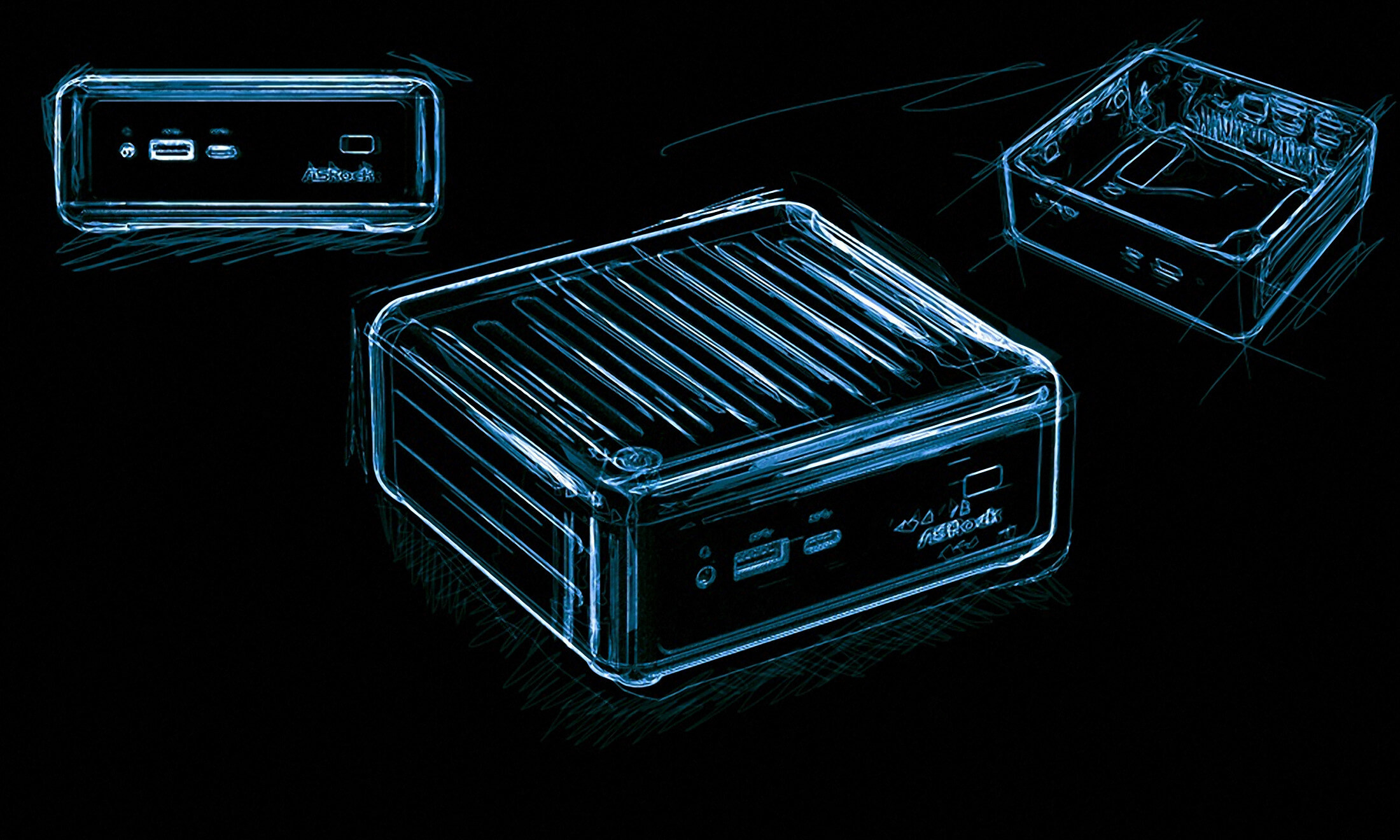Equipping The Hive
As we just mentioned, getting inside the Beebox-S to install hardware is fairly quick and painless. You only have to remove four screws from underneath the Beebox-S, and the bottom cover comes right off.
Once done, users are presented with a motherboard equipped with only the 802.11ac WiFi card. You can install up to two SO-DIMM modules along with an M.2 SSD and/or 2.5" storage device.
The M.2 SSD simply slots in over the WiFi card, and installing it only takes seconds. The DDR4 memory modules also clip right into their SO-DIMM slots. As you would expect, there is limited space to work with, but we had no trouble getting either the M.2 SSD or memory modules installed.
Attaching the 2.5" storage device to the bottom cover is made easy by the fact that the mounting plate is removable via four screws which feature vibration absorbing rubber pads to help reduce any noise that might be generated when using a mechanical hard drive.
With the 2.5" storage device fitted to the cover, the last step involves connecting the supplied custom SATA power/data cable to the main PCB and then to the SATA drive itself. Surprisingly, even a year later, Asrock has not come up with an elegant way of doing this. The previous design required the user to force the lid back on, forcefully clamping down on the SATA data cable in the process.
Asrock told us the production model featured a different cable that corrected this flaw. Well, the Beebox-S does come with a different cable. However, that cable, too, suffers from the same issue. I spent a good 10 - 15 minutes trying to figure out how to get the lid back on without compressing the cable, and I failed to see a way to avoid this issue. In the end, I had to force the lid down and resecure it, resulting in the data cable being squashed unceremoniuosly against the SO-DIMM slots.
Nothing was damaged in our case, but it makes installation considerably more difficult than it needs to be. A quick fix would have been to design the Beebox-S for the cable from the DeskMini 110.
As the Beebox-S is a rectangular shape rather than a perfect square, the cover only fits two of four possible ways. However, with the 2.5" storage spot occupied there is just one correct way to fit the cover back on, and once you have figured that out you are set.
Since we had a pair of G.Skill DDR4-2133 Ripjaws 16GB modules lying around, we installed those for a huge 32GB capacity. As for the M.2 SSD, we wanted to go with the Samsung SSD 950 Pro 512GB since the Beebox-S supports Type 2280 SSDs.
I had to consult the user manual in order to do this, since the motherboard only features a mounting location for 2260 (60mm long) M.2 SSDs. It turns out that in order to use Type 2280 SSDs, you must remove the M.2 mount altogether, and replace it with a custom plastic mount. It is an inelegant-yet-easy means of installing an M.2 SSD, and we like Asrock's ingenuity here.
With the custom mount in place, we secured the Samsung SSD 950 Pro and moved on to mount a mechanical hard drive on the lid. This was again a quick and easy process that hasn't changed from the original model. Overall, the installation process went relatively smoothly, with the exception of the squish-the-cable problem mentioned with regards to the 2.5" drive installation.






